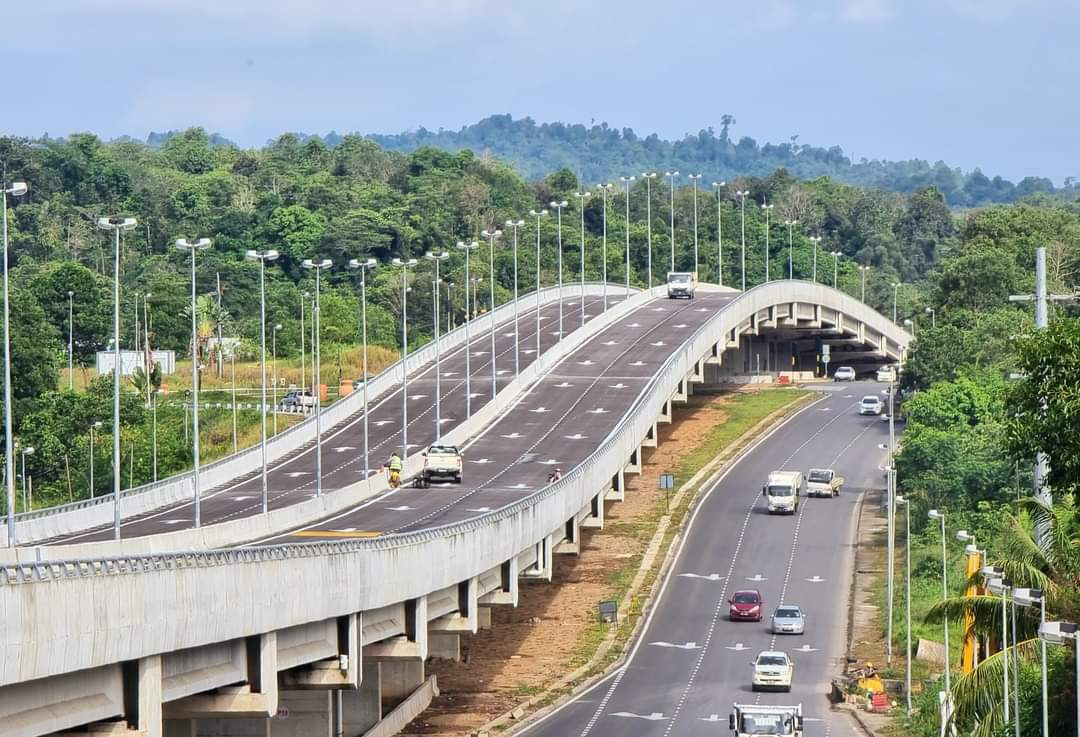ADVERTISE HERE

File photo shows an aerial view over Sibu town. According to Sie, the division is renowned for its extensive peat soil, which covers nearly 70 per cent of the land. — Bernama photo
SIBU (July 7): The local division of the Institution of Engineers Malaysia (IEM) fully supports the proposal of building elevated roads as a new approach for the construction of roads over peat soil.
According to IEM Sibu Region chairman Sie Teck Sung, Sibu is renowned for its extensive peat soil, which covers nearly 70 per cent of the land.
“In fact, about one-third of Sarawak’s peatlands are found in Sibu.
“Given the unique challenges posed by this type of soil, which results in prolonged settlement for road construction, it is essential to adopt specialised construction techniques.
“Therefore, we hope that in the future, both the federal and state government could grant Sibu town additional funding to enable more roads to be constructed using elevated or suspended method,” Sie, also a senior lecturer at the University of Technology Sarawak (UTS), said in a statement.
Sie said IEM Sibu Region, as a leading local engineering institution, concurred with the state government’s suggestion of building elevated roads over peat soil.
“The peat soil is composed of extremely high moisture content, which results in low shear stress and hence, very compressible.
“Thus, the conventional construction by direct earth-filling into the existing peat soil should always be avoided. If not, the consequence would be prolonged settlement as seen in most of the roads in Sibu town.”
Sie said in recent years the developers in Sibu had been practising the ‘suspended road construction method’, in which the road would be built using concrete reinforced with steel bars and fully suspended or supported by piles driven to firm-set.
He said this was in line with the elevated road suggestion.
“Generally, there are three types of suspended roads. The first is the conventional beam-and-slab method similar to the common slab or floor construction for housing.
“The second is the ‘basin type’ or ‘box type’ – as the name implies, it is like a basin or a box in which, is a beamless slab approximately 1m below the road surface, and supported by piles with retaining walls at both sides.
“The third is the ‘elevated carriageway type’, with carriageway slab hanging on top, with trenches at both sides to accommodate utilities, such as water mains or pipes, and electricity cables.
“Each type comes with its own pros and cons, which require further elaboration.”
Sie said for both basin and elevated types, a drop panel or pile cap on top of pile to support the suspended slab was pivotal in preventing punching shear failure.
Sie said the Sibu Municipal Council (SMC) had also expressed support for the suspended road construction method.
“There is no deposit imposed by SMC for suspended roads when the developer hands over the completed projects to the council.
“On the contrary, the deposit is imposed wherever there is a road built directly via earth-filling into the existing ground, and the developer is to warrant that the completed road is not to subside 200mm (eight inches) within a two-year period; failing to meet the set requirements means that the developer has to resurface the road – otherwise, the deposit would be forfeited for resurfacing purposes to reinstate the road to its original level,” he elaborated.
Sie said such endorsement was related to the benefits of what suspended roads could provide such as increased durability, reduced or zero maintenance costs and longer lifespan.
“It also provides a pleasant aesthetic view compared to the undulating road using the conventional method.
“Nonetheless, it is important to note that the high initial construction cost is the significant setback,” he added.








 English (US) ·
English (US) ·